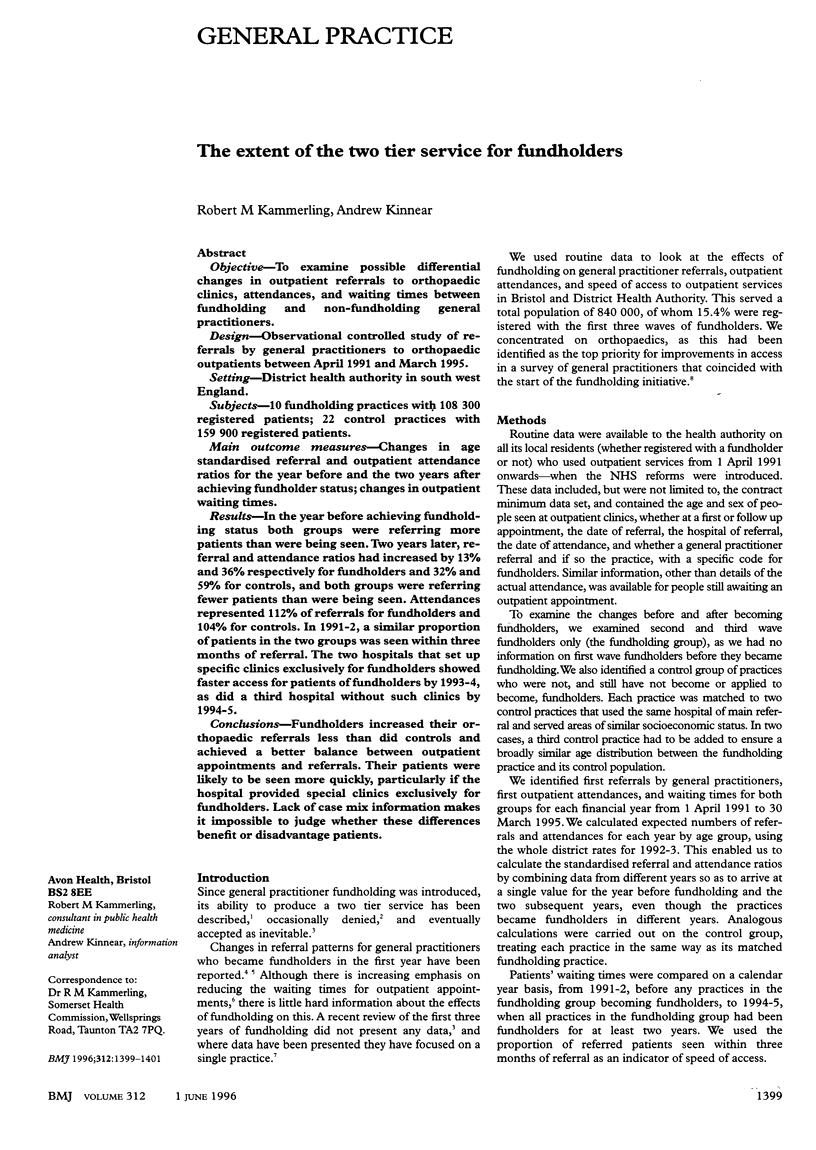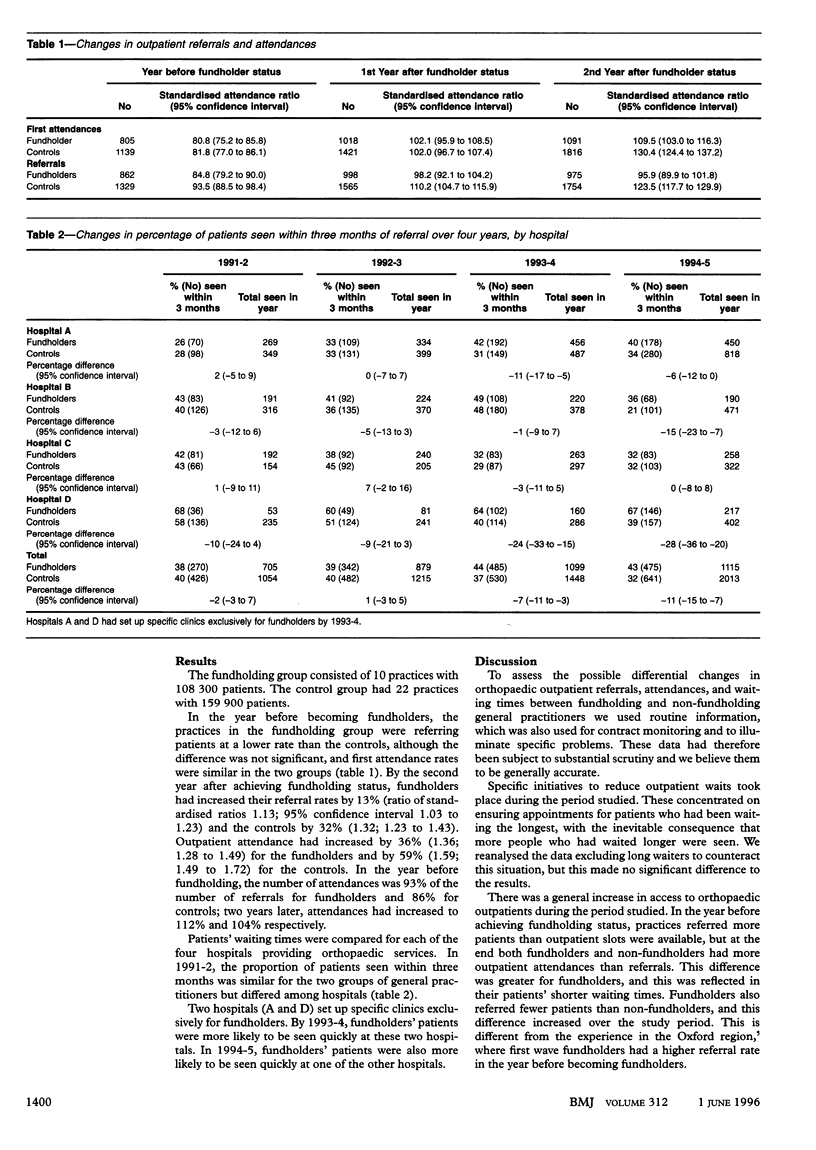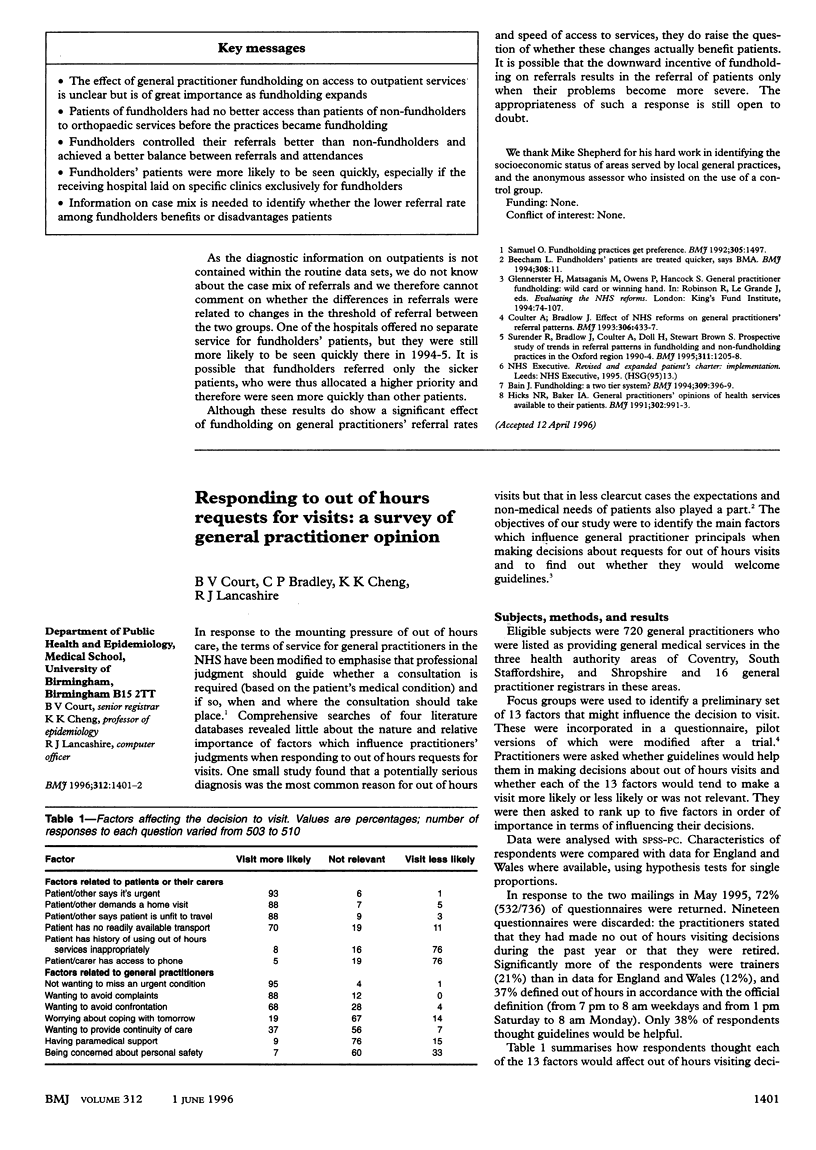Abstract
OBJECTIVE--To examine possible differential changes in outpatient referrals to orthopaedic clinics, attendances, and waiting times between fundholding and non-fundholding general practitioners. DESIGN--Observational controlled study of referrals by general practitioners to orthopaedic outpatients between April 1991 and March 1995. SETTING--District health authority in south-west England. SUBJECTS--10 fundholding practices with 108,300 registered patients; 22 control practices with 159,900 registered patients. MAIN OUTCOME MEASURES--Changes in age standardised referral and outpatient attendance ratios for the year before and the two years after achieving fundholder status; changes in outpatient waiting times. RESULTS--In the year before achieving fundholding status both groups were referring more patients than were being seen. Two years later, referral and attendance ratios had increased by 13% and 36% respectively for fundholders and 32% and 59% for controls, and both groups were referring fewer patients than were being seen. Attendances represented 112% of referrals for fundholders and 104% for controls. In 1991-2, a similar proportion of patients in the two groups was seen within three months of referral. The two hospitals that set up specific clinics exclusively for fundholders showed faster access for patients of fundholders by 1993-4, as did a third hospital without such clinics by 1994-5. CONCLUSIONS--Fundholders increased their orthopaedic referrals less than did controls and achieved a better balance between outpatient appointments and referrals. Their patients were likely to be seen more quickly, particularly if the hospital provided special clinics exclusively for fundholders. Lack of case mix information makes it impossible to judge whether these differences benefit or disadvantage patients.
Full text
PDF


Selected References
These references are in PubMed. This may not be the complete list of references from this article.
- Bain J. Fundholding: a two tier system? BMJ. 1994 Aug 6;309(6951):396–399. doi: 10.1136/bmj.309.6951.396. [DOI] [PMC free article] [PubMed] [Google Scholar]
- Coulter A., Bradlow J. Effect of NHS reforms on general practitioners' referral patterns. BMJ. 1993 Feb 13;306(6875):433–437. doi: 10.1136/bmj.306.6875.433. [DOI] [PMC free article] [PubMed] [Google Scholar]
- Hicks N. R., Baker I. A. General practitioners' opinions of health services available to their patients. BMJ. 1991 Apr 27;302(6783):991–993. doi: 10.1136/bmj.302.6783.991. [DOI] [PMC free article] [PubMed] [Google Scholar]
- Surender R., Bradlow J., Coulter A., Doll H., Brown S. S. Prospective study of trends in referral patterns in fundholding and non-fundholding practices in the Oxford region, 1990-4. BMJ. 1995 Nov 4;311(7014):1205–1208. doi: 10.1136/bmj.311.7014.1205. [DOI] [PMC free article] [PubMed] [Google Scholar]


